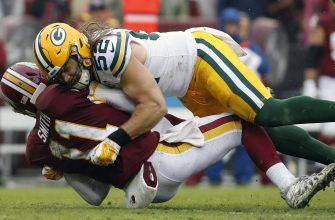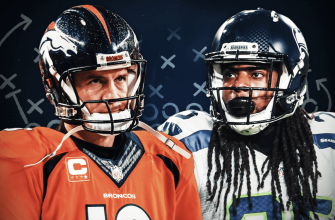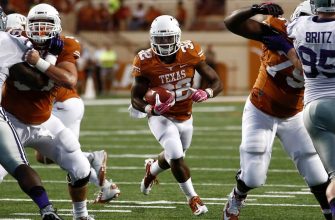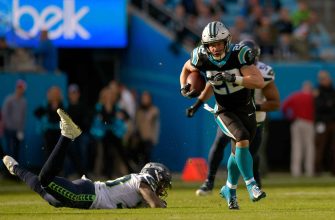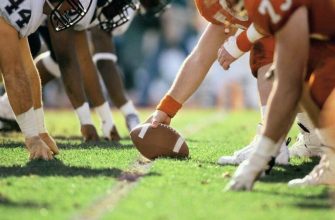A field goal is one of the main ways to score points in American football and Canadian football. It involves a player known as the placekicker kicking the ball through the uprights of the goalpost, which are located at the back of the end zone.
Field goals have been a part of football since the creation of the sport in the late 1800s. They have always served as an important strategy for scoring points when the offense cannot advance far enough down the field for a touchdown. While rules and strategies around field goals have evolved over time, they remain a key component of football gameplay.
The term “field goal” refers to the fact that the ball is being kicked while in the field of play, as opposed to a conversion kick which takes place after a touchdown. They are typically attempted on fourth down when the offensive team does not believe it can make a first down. However, they can also be kicked at any time during a team’s offensive possession.
Successfully kicking the ball through the uprights results in three points. This makes field goals worth less than a touchdown (six points) but more than a safety (two points). Their strategic value comes from being able to incrementally put points on the board through several successful kicks over the course of a game.
How a Field Goal is Scored
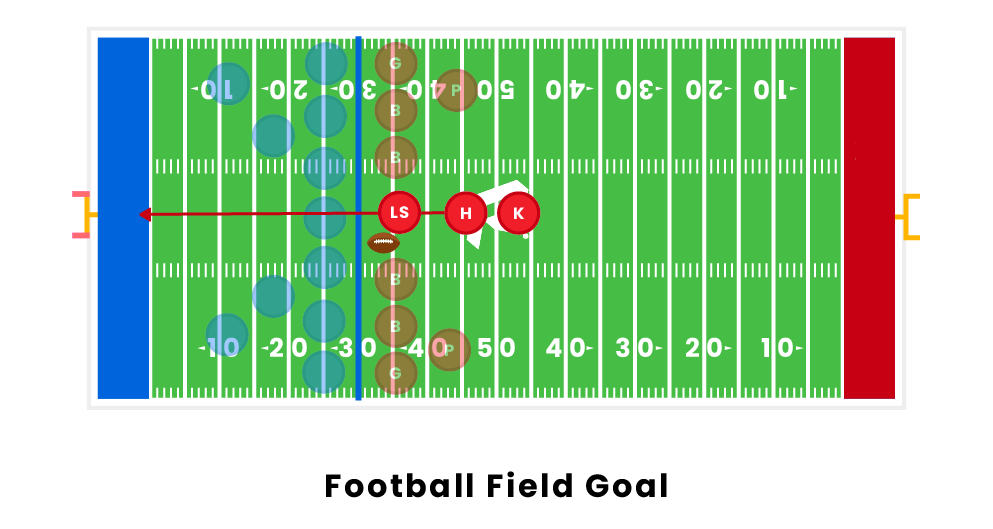
In American football, a field goal is scored when the ball is kicked through the uprights located on the back of the endzone. To be considered a successful field goal, the entire ball must pass between the uprights and over the crossbar.
Field goals are attempted by a placekicker from anywhere on the field of play. The kick will typically take place several yards behind the line of scrimmage, with the line of scrimmage serving as the reference point. On most field goal attempts, a holder will receive the snap and place the ball on the ground for the kicker. The kicker will then kick the ball off the ground through the uprights.
If the field goal attempt is successful, the kicking team will be awarded 3 points. This can be a valuable way to put points on the board if the offense cannot reach the endzone. The field goal adds an element of strategy to the game, with teams needing to weigh the upside of attempting a field goal versus trying to keep the drive going to potentially score a touchdown worth 6 points.
Field Goal Distance
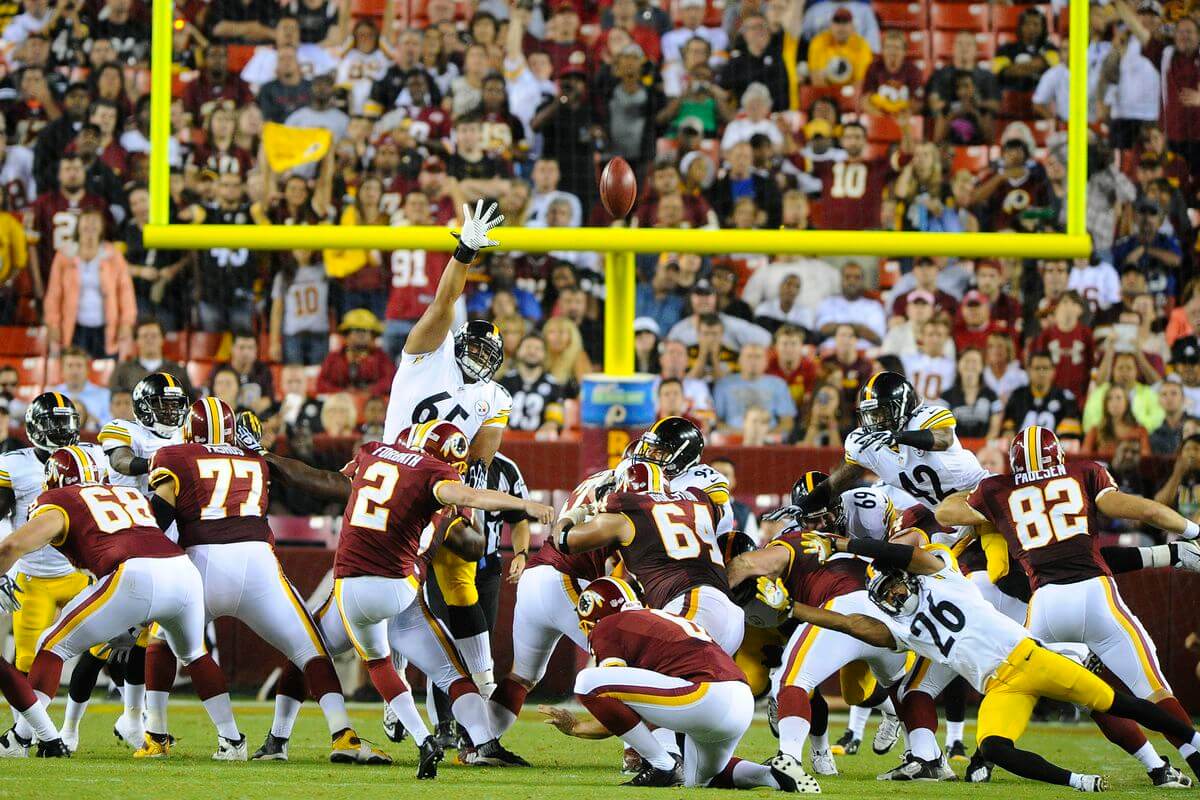
An NFL football field is 100 yards from one end zone to the other. This includes the two 10-yard end zones on each side. So from the back of one end zone to the front of the other end zone where the field goal posts stand is 80 yards.
Field goals can be attempted from anywhere on the field, but commonly they are kicked from inside the 35 yard line. Field goals attempted within the 20 to 39 yard range are the most frequently attempted and made. These are considered medium range field goals.
Long field goals are those attempted from 40 yards or greater. Once you get to 50+ yards, field goals become increasingly challenging. The longest field goal ever made in the NFL was 64 yards by Matt Prater in 2013. Anything beyond 65 yards is incredibly difficult, requiring immense leg strength from the kicker. The greater the distance, the lower the chances are of making the kick due to the high trajectory and distance required.
So while a field goal can be attempted from anywhere, most kicks fall into the short (less than 40 yards), medium (20-39 yards) or long (40+ yards) range categories, with the medium range being the most common. The crowd always gets extra loud when teams line up for 50+ yard attempts, knowing they are rare and difficult to make.
Strategy Behind Field Goals
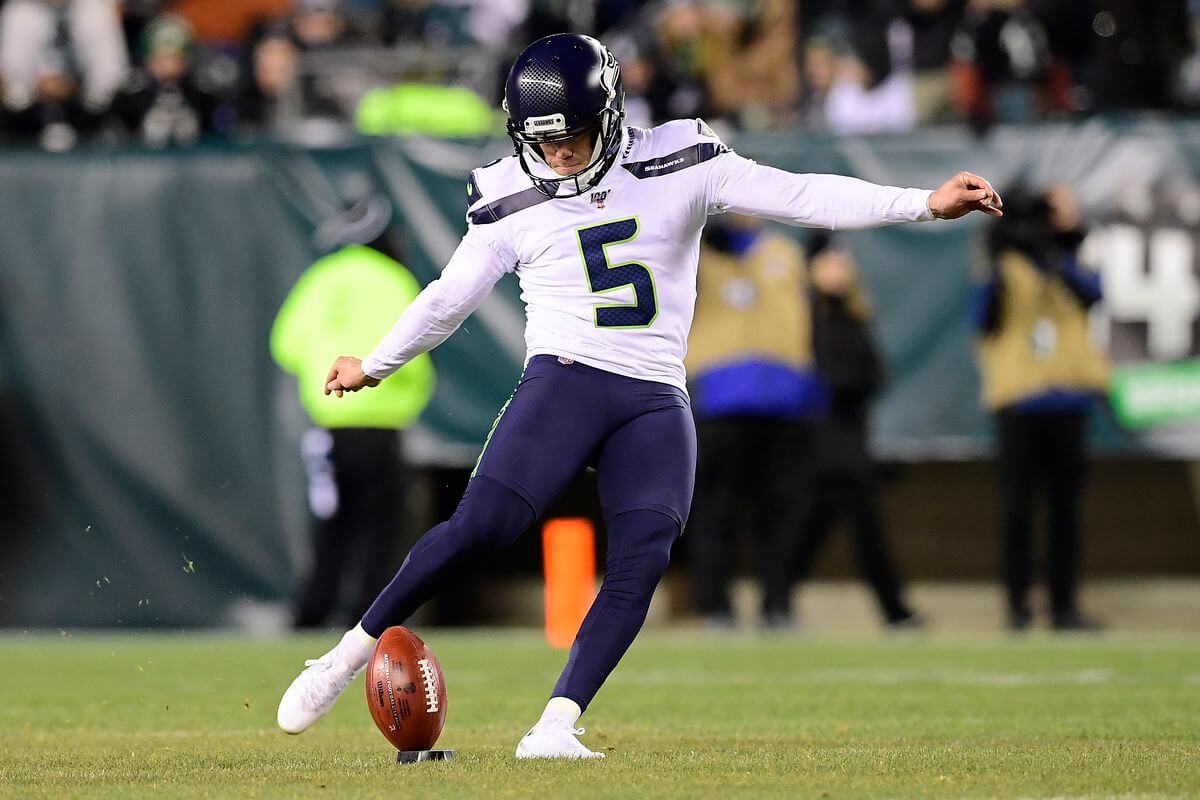
Coaches must weigh several factors when deciding whether to attempt a field goal or try for a touchdown on fourth down. The most common considerations are field position, time remaining, and the score of the game.
When to Kick vs Go for Touchdown
If the offense is deep in their opponent’s territory but facing a 4th down with yards to go, coaches usually opt for the field goal attempt. The almost guaranteed 3 points provides a valuable scoring opportunity without turnover risk. However, closer to the end zone, coaches typically prefer to go for the touchdown on 4th down despite lower odds of success. The reward of 6 points outweighs just taking the field goal.
Managing the Clock
In a close game with little time left, a field goal can be used strategically to regain or preserve a lead. If successful, it runs extra time off the clock that the opponent then lacks to answer back with their own score. Coaches will sometimes hurry to kick a field goal in the final seconds rather than try to move closer but run out of time before the attempt.
Impact on Momentum
Field goals also factor into a team’s momentum. If an offense drives down the field but stalls in the red zone, settling for 3 points can feel deflating and shift momentum to the opponent. In contrast, making a long field goal against the odds can energize a team and their fans. Coaches sometimes go for it on 4th down to maintain momentum rather than kick and surrender the ball.
Famous Field Goals
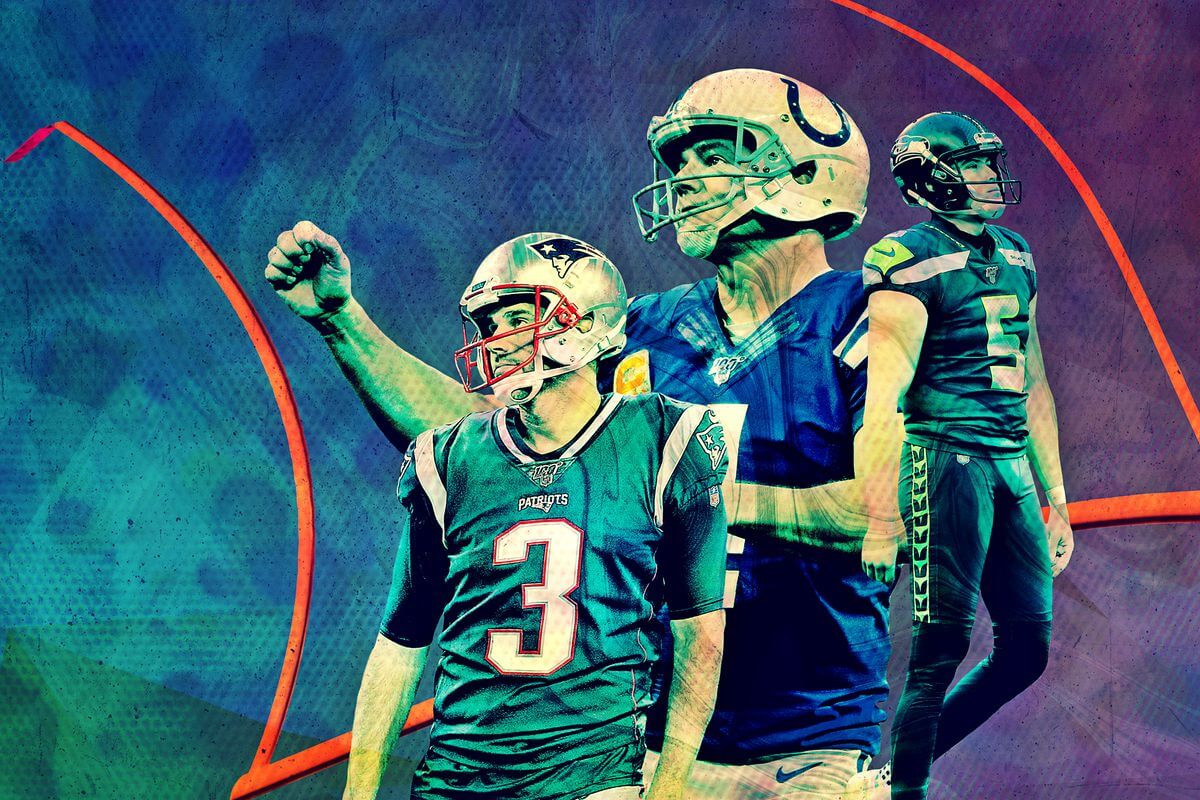
Some of the most memorable moments in NFL history have come from dramatic game-winning or record-setting field goal kicks.
Here are some of the most famous field goals in NFL lore:
- Adam Vinatieri’s Snow Bowl Kick – In the 2001 AFC Divisional Playoffs, Adam Vinatieri made a 45-yard field goal in blizzard conditions to send the New England Patriots to the AFC Championship. This kick sparked the Patriots dynasty of the 2000s.
- Justin Tucker’s 66-Yarder – In 2021, Justin Tucker of the Baltimore Ravens booted an NFL-record 66-yard field goal as time expired to defeat the Detroit Lions. It was the longest field goal ever made in a game.
- Tom Dempsey’s 63-Yarder – In 1970, Tom Dempsey of the New Orleans Saints kicked a 63-yard field goal to beat the Detroit Lions, setting the NFL record at the time. Dempsey was born without toes on his kicking foot and his boot had a modified flat front.
- Adam Vinatieri’s Super Bowl Winners – Adam Vinatieri won Super Bowls for the Patriots in 2002 and 2004 with game-winning field goals in the final seconds. His 48-yarder won Super Bowl XXXVI against the Rams.
- Blair Walsh’s Missed Chip Shot – In an NFC Wild Card game in 2016, Blair Walsh of the Minnesota Vikings missed a 27-yard field goal with 22 seconds left, costing his team the game against the Seahawks. It was one of the most stunning shanked field goals ever.
- Gary Anderson’s First Miss of 1998 – In the 1998 NFC Championship, Gary Anderson of the Vikings missed a 38-yard field goal after making every kick all season long. The Falcons recovered and won the game in overtime.
- Scott Norwood’s “Wide Right” – Scott Norwood missed a 47-yard field goal wide right with 8 seconds left in Super Bowl XXV, denying the Buffalo Bills a championship win over the Giants.
Field Goal Records
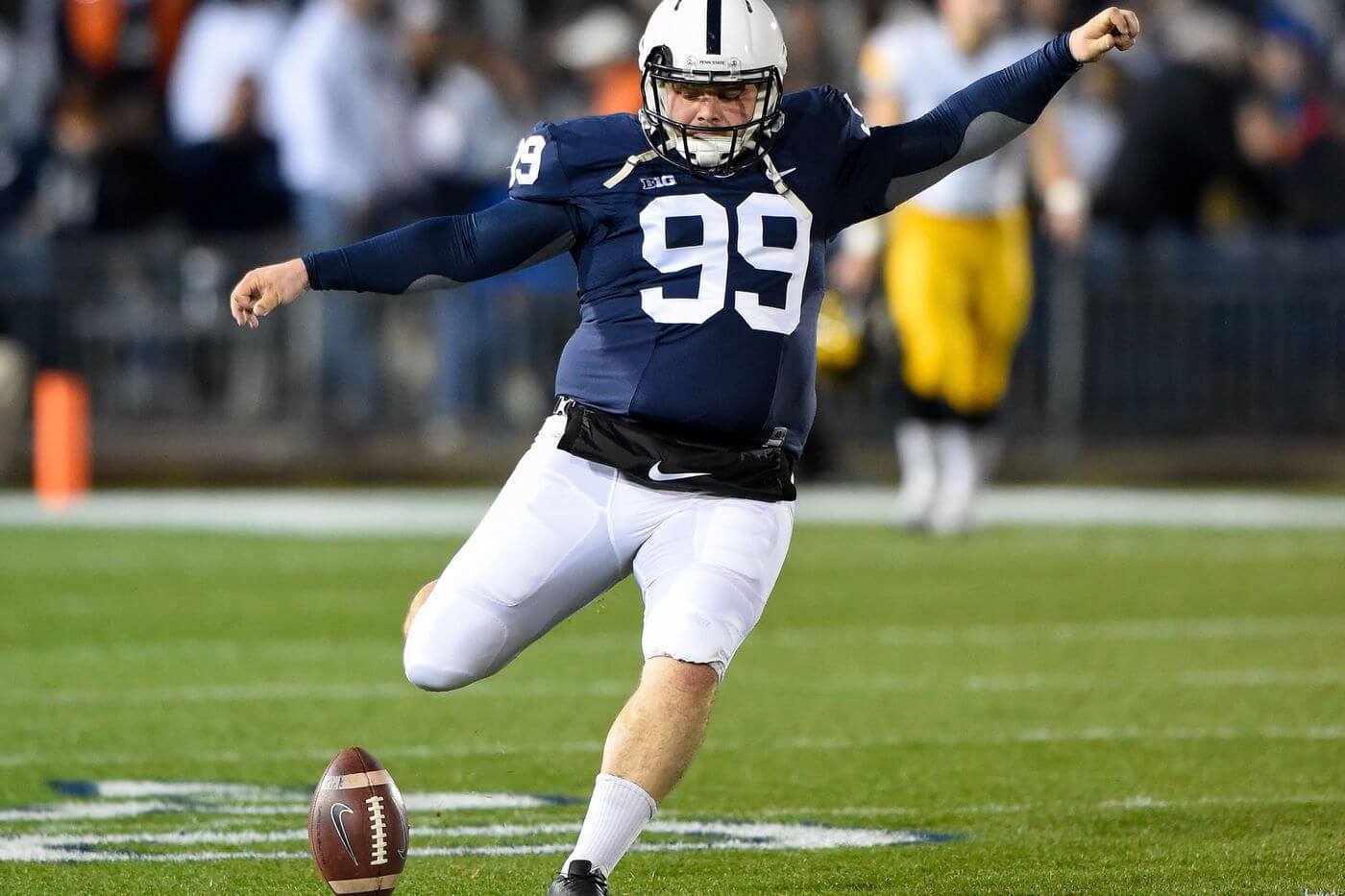
Some of the most impressive field goal records include:
- Longest Field Goal – The longest field goal ever made was 64 yards by Matt Prater of the Denver Broncos in 2013. The previous record holder was Tom Dempsey, who kicked a 63-yard field goal for the New Orleans Saints in 1970. Only a handful of kickers have made field goals of 60+ yards.
- Most Accurate Kickers – Among retired players, Nick Lowery has the highest career field goal percentage at 80.9%. Among active kickers, Justin Tucker has the highest accuracy rate at 90.8%. Tucker is the most accurate kicker in NFL history.
- Seasonal Records – The record for most field goals in a season is 44 by David Akers in 2011 for the San Francisco 49ers. The record for best field goal percentage in a season is 96.2% by Robbie Gould in 2006 for the Chicago Bears (minimum 20 attempts).
- Career Records – The career record holder for most field goals is Adam Vinatieri with 599. Morten Andersen holds the record for most points by a kicker in a career with 2,544. Andersen also has the most games played by a kicker at 382.
- Longest Streak – Matt Stover holds the record for most consecutive games scoring a field goal with 38 games from 1999-2001.
The evolution of field goal range and accuracy has led to impressive records over the years. With today’s kickers able to regularly hit 55+ yard field goals, it’s likely we’ll continue to see new distance and accuracy benchmarks set in the future. Tremendous leg strength and precision are needed to hit the long field goals and uphold the high standards of today’s NFL kickers.
How to Attempt a Field Goal
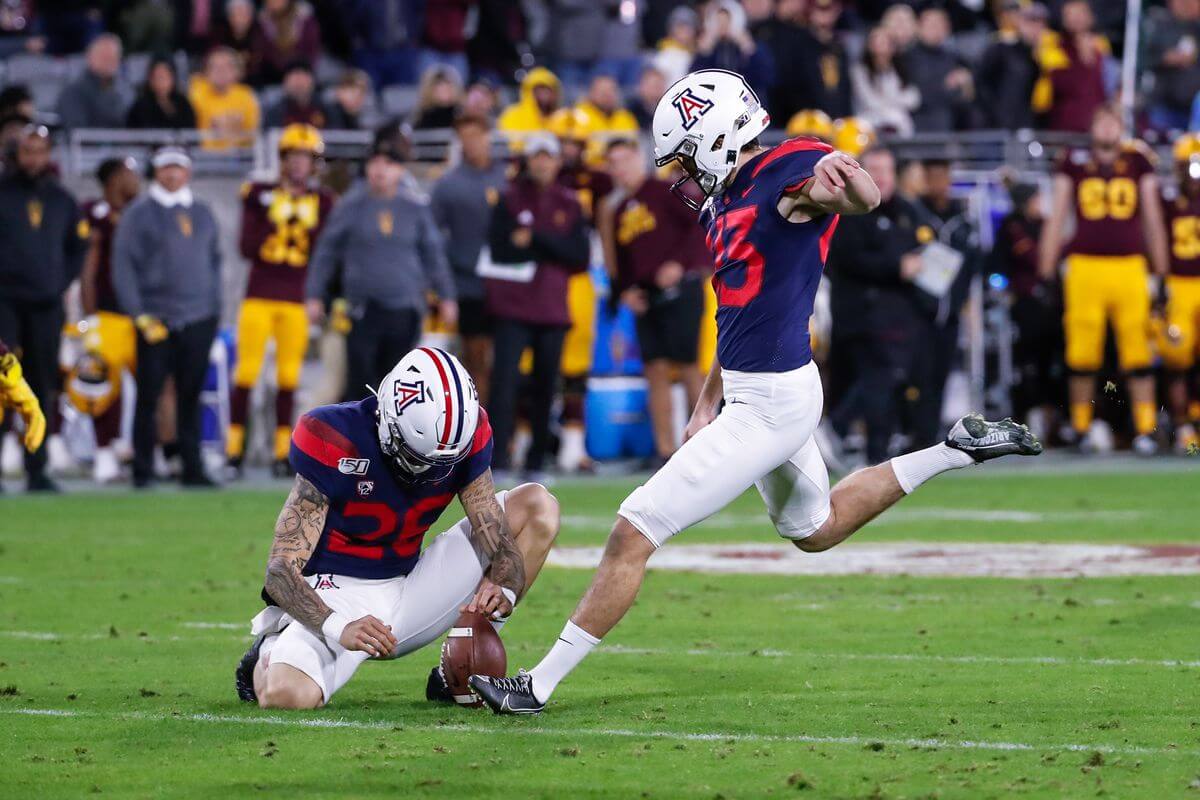
Kicking a successful field goal requires precision and consistency between the snapper, holder, and kicker.
Here is an overview of the mechanics involved:
The Snap
The process begins with the snapper, who hikes the ball backwards between his legs to the holder positioned 7 yards behind the line of scrimmage. The snap needs to be quick and accurate, with the laces facing outward so the holder can easily spin the ball. A bad snap can ruin timing and impact the kick.
The Hold
The holder catches the snap and places the ball on the field, with the tip pointing downward at about a 45 degree angle. This allows the kicker to contact the ball solidly. The holder positions his index finger in front of the laces so he can quickly spin the ball as the kicker approaches. A skilled holder keeps the laces out and presents a consistent target.
The Approach
During the snap, the kicker takes 2-3 steps back and 2-3 steps to the side to create an angle. As the holder catches the ball, the kicker slows and times his last two strides to match the spin. This approach builds momentum and rhythm leading into the kick. Kickers have their own preferences for number of steps, angles, etc.
The Kick
The kicker contacts the ball with the top of the foot, with the toe pointed down and angled slightly outward. The knee is slightly bent and the follow through extends straight towards the target. Kickers aim to make solid contact just below the midline of the ball. Consistent mechanics, timing, and follow through are essential for accuracy.
Executing a successful field goal requires coordination between the snapper, holder, and kicker. Each position has key techniques that enable the kicker to connect on the attempt.
Challenges for Kickers
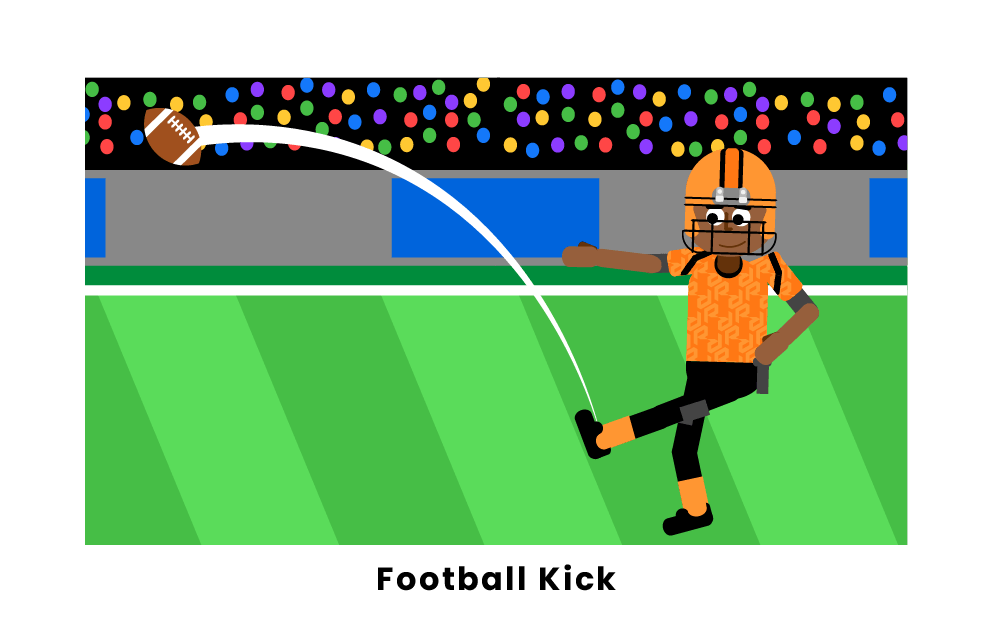
Kicking field goals in the NFL presents a unique set of challenges that requires immense skill, technique, and mental toughness from kickers.
Here are some of the biggest challenges kickers face:
- Distance – The farther away the kick is from the goalposts, the more challenging it becomes. NFL kickers can make field goals from over 50 yards away, but anything beyond 55 yards requires elite leg strength and accuracy. Kickers must adjust their technique and kick velocity to account for the distance.
- Weather Conditions – Kicking in cold, windy, rainy, or snowy weather makes field goals extremely difficult. The ball reacts differently, and the wind can greatly impact the flight path. Kickers may need to aim off-center or use lower kick trajectories. Home kickers familiar with their stadium’s weather patterns have an advantage.
- Pressure – With the game on the line in front of tens of thousands of fans, the pressure to make a clutch field goal is immense. Kickers must block out all external factors and distractions to focus on their technique and make the kick. A miss in a big moment can be devastating for a kicker’s confidence.
Mastering field goals despite these variables is what separates the NFL’s greatest kickers. The techniques and mental preparation necessary to find consistency amid such challenges is incredibly impressive. Elite kickers thrive under pressure and master the intricacies of kicking in all conditions.
Overcoming these adversities is essential on the path to becoming an all-time great NFL kicker.
Controversies
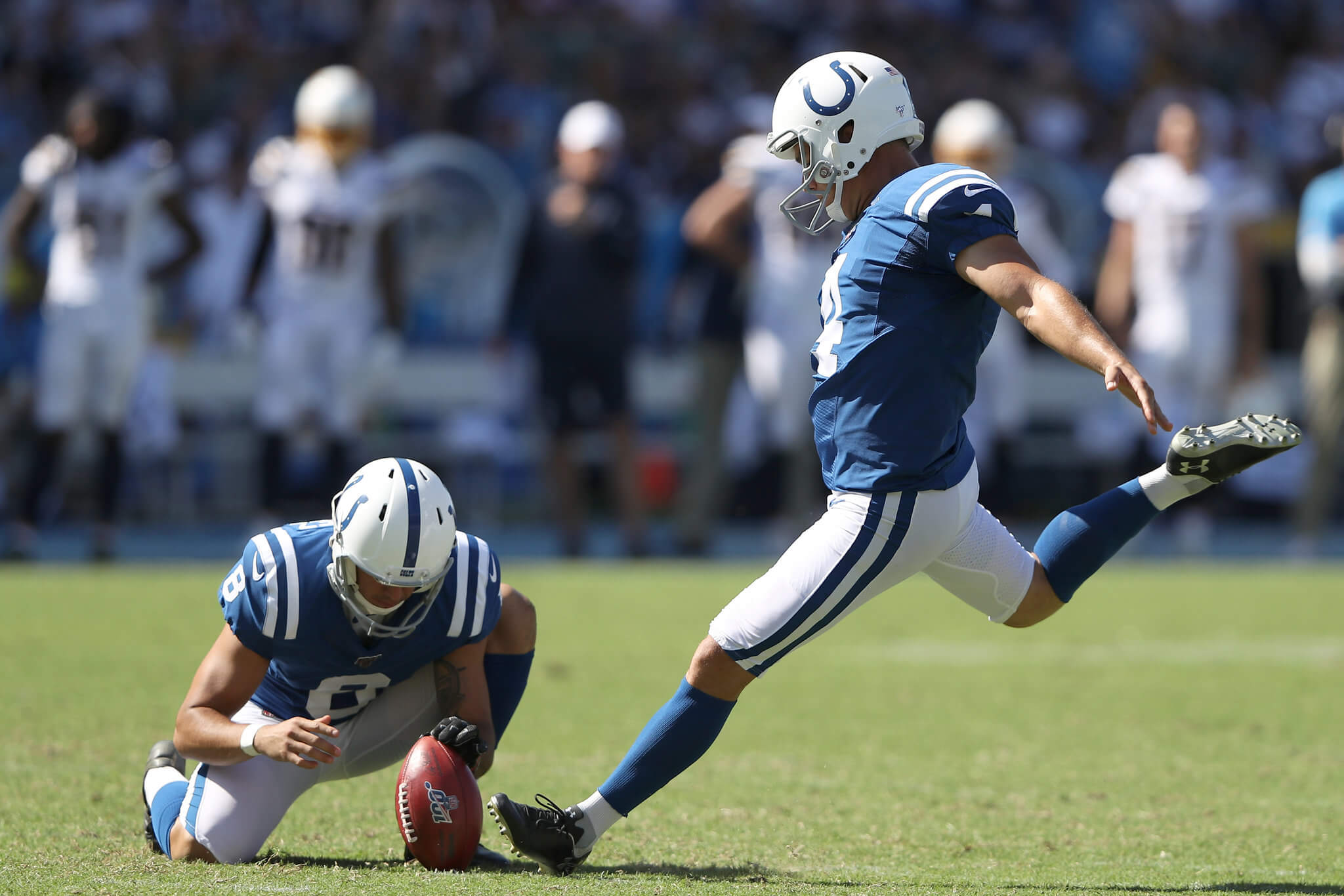
Professional football has not been without its controversies surrounding field goals. There have been several high-profile cases where referees have incorrectly called field goals good or no good. Most famously, during a 2012 game between the Green Bay Packers and Seattle Seahawks, referees controversially ruled that Seattle’s last-second field goal was good, sealing an unlikely Seahawks victory. Replays showed that the ball had actually passed under the upright, which should have rendered it no good. The “Fail Mary” play, as it came to be known, was seen as an egregious officiating error and led to changes in referee training and procedures.
Another controversy arose during a 2016 game when New England Patriots coach Bill Belichick exploited an obscure rule to give his kicker an advantage during an icy game against the Baltimore Ravens. Belichick exploited the rule that coaches were allowed on the field along the sideline, so he intentionally stood in the path where Ravens players would need to run to block the kick. This seemed to confuse and hinder the Ravens players, allowing the Patriots kicker to make the winning field goal unimpeded. The NFL later changed this rule to prevent any unfair advantages.
So while the field goal is one of football’s simplest scoring plays, controversy still seems to follow kickers on the biggest stages. Missed calls and unfair advantages have shaped some of the NFL’s most famous field goal memories.
Future of Field Goals
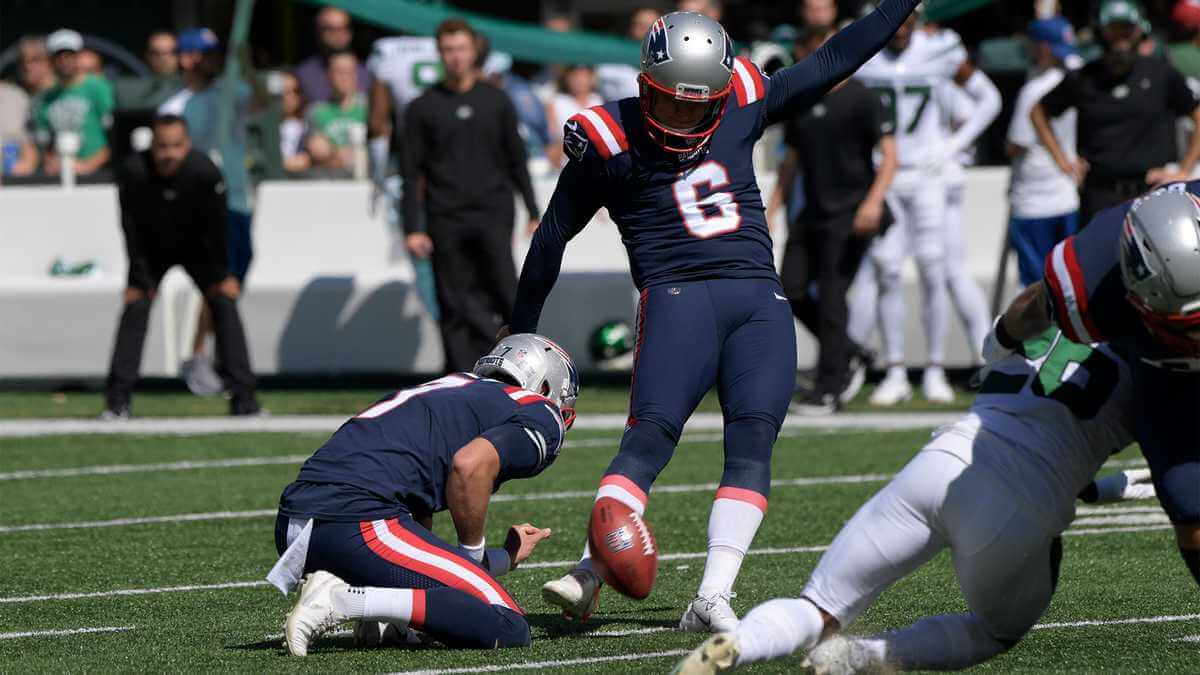
The future of field goals in football could see some changes as the NFL continues to tweak the rules and as kickers improve their techniques.
Here are some ways field goals may evolve:
- Rule Changes – The NFL has altered rules over the years to make field goals tougher. These include moving the goal posts back to the rear of the end zone in 1974 and narrowing the goalposts in 2014. More rule changes could be on the horizon, such as banning long snapper assistance or forcing kickers to kick at different, sharper angles. The NFL wants to encourage teams to go for it on 4th down more rather than settle for field goals.
- Better Kickers – Kicker accuracy has steadily improved over the decades. Kickers practice year-round and have better techniques. Their consistency from long range may compel the NFL to install rule changes. In 2013, kickers made 86.5% of field goal attempts, an all-time high. More kickers today can hit 60+ yard field goals.
- Technique Improvements – Kickers are refining and enhancing techniques for better accuracy and distance. Using the ground as leverage, adjusting foot placement, angling the steps, and controlling hip torque generate more power. Kickers study their own mechanics and perfect their motions. Proper follow-through and rotation generate height. Nutrition and strength training also help kickers maximize their range.
- Trick Shots – As kickers gain confidence in their abilities, they may try more trick shots. Kickers could attempt angled kicks from the hash mark or curved kicks that hook in mid-air. Soccer-style kickers could become versatile enough to add new shot types to their repertoire. However, trick kicks would mainly be novelty kicks as most kickers will play it safe.
The future of field goals will depend on the interplay between NFL rule changes and kicker improvement. While we may see kickers stretch the limits of field goals, NFL rules are likely to evolve to keep field goals challenging and less automatic.


